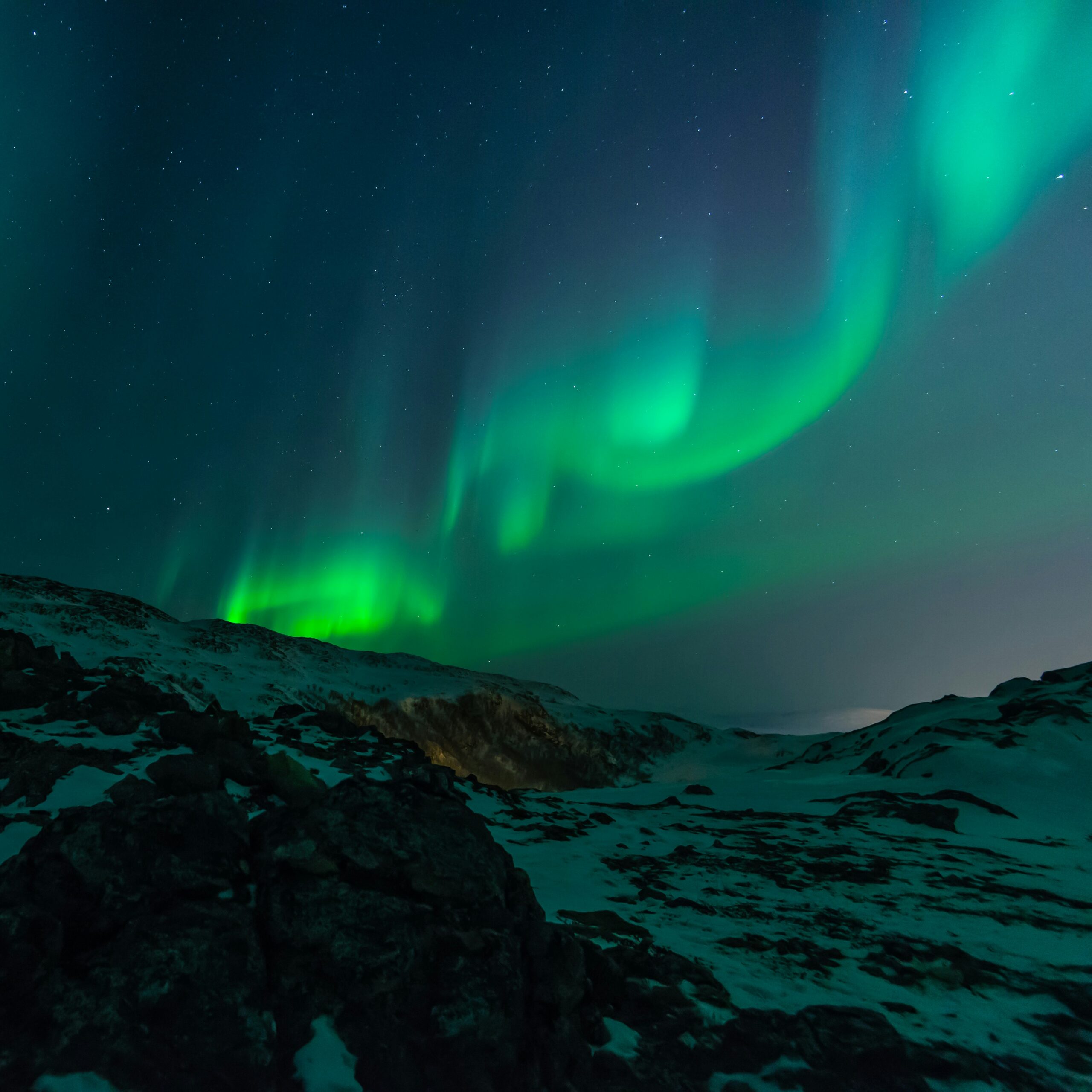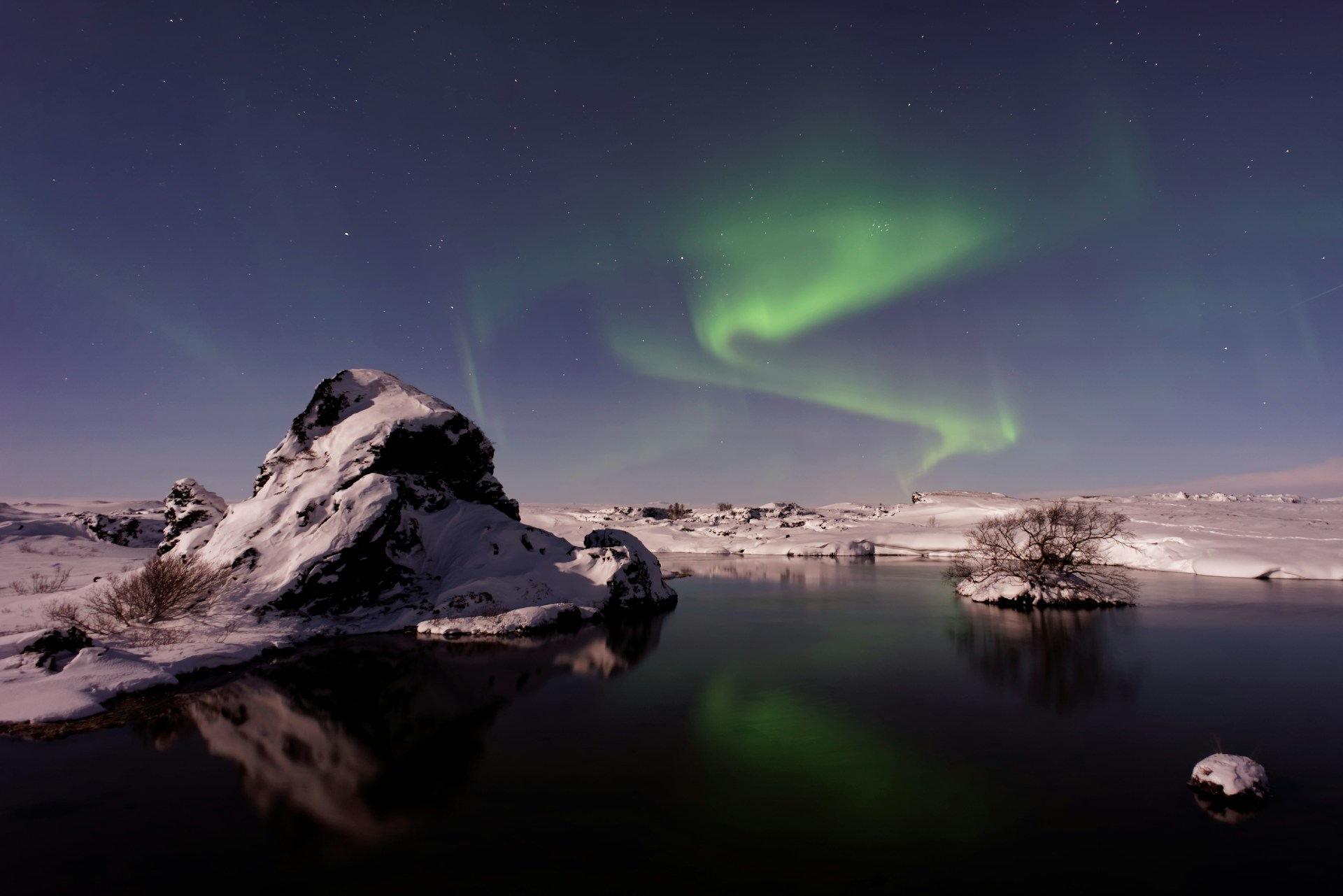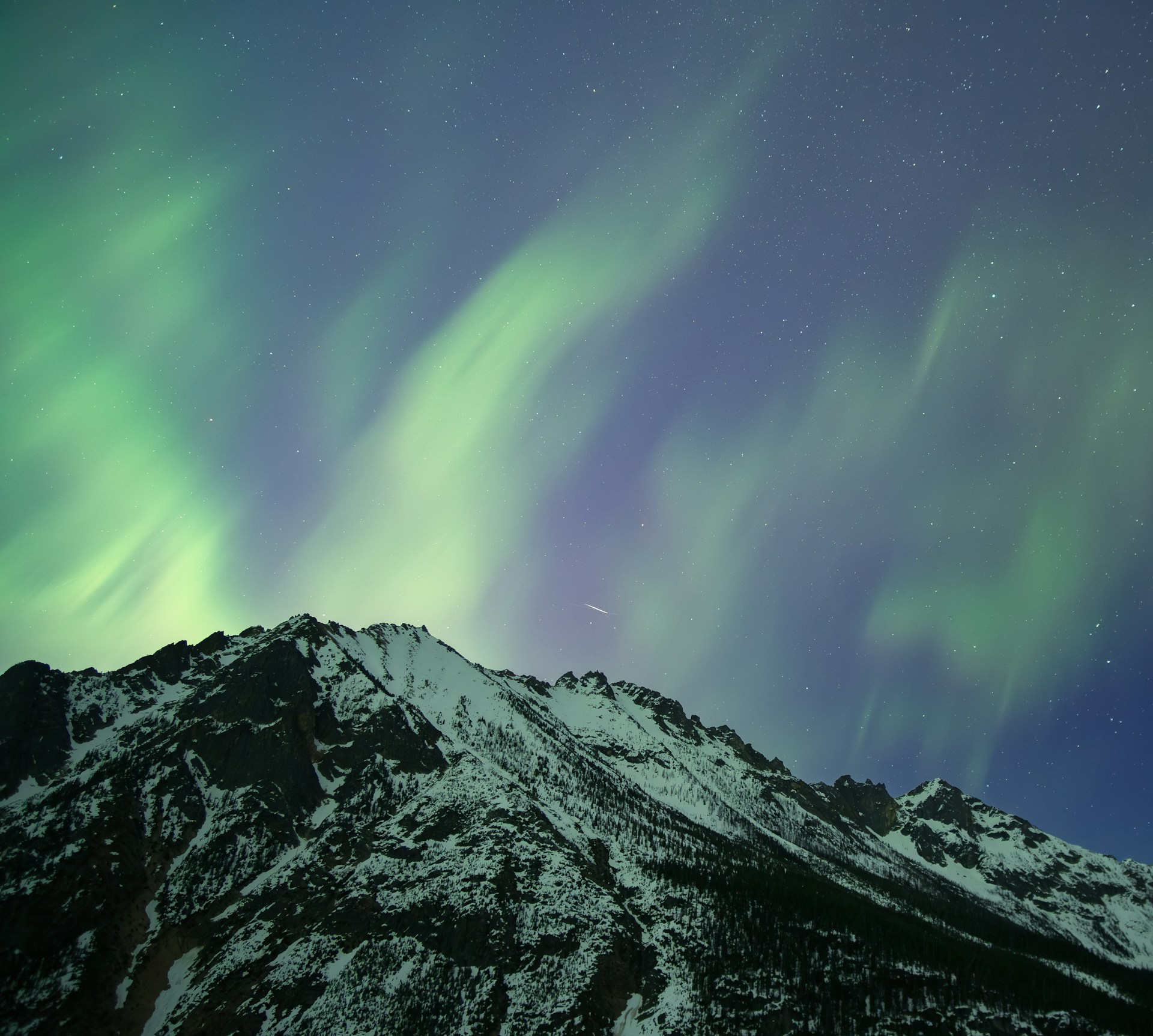11 Jul Where to See the Aurora Borealis With Kids

Whether you know them as the northern lights or the aurora borealis, skies near the Arctic sparkle with vibrant waves of color during the winter and early spring. Legend says Galileo Galilei coined the term aurora borealis in 1623, finding inspiration in the goddess of the dawn, “Aurora,” and the northern wind, “Borealis.” Marrying the two names created the perfect description for the visual impression created by the phenomenon.
Whatever you choose to call them, one thing’s for sure. They’ve become a significant bucket-list travel item for families in recent years. But if you’re wondering what the lights are, where to see the aurora borealis, and if such an adventure is kid-friendly, you’re far from alone. Fortunately, we’ve got your answers!
Keep reading for answers to these questions (and more!) to help you prepare for your family adventure to the northern hemisphere.
What Are the Northern Lights?
Many people wonder what they’re observing when twinkling light waves splash across the northern night sky. Scientifically speaking, your eyes are taking in highly charged solar wind particles as they collide with air molecules from the earth’s atmosphere. The resultant energy from the collision is perceived as impossibly colorful light.
The aurora borealis occurs between 60 and 75 degrees of latitude, encompassing various northern regions: Norway, Sweden, Canada, Finland, Alaska, and Russia, to name a few. Of course, some places prove more accessible than others.
Interestingly, many people don’t realize the southern hemisphere boasts a similar phenomenon known as the aurora australis. Although the northern and southern lights happen simultaneously, they aren’t always visible at the same time. Why? Because seasons from the northern to southern hemispheres are inverted.

When to See the Northern Lights
The northern lights phenomenon takes place year-round. But they’re most noticeable between late August and the middle of April. Remember that the lights are especially visible around the equinoxes (e.g., March 21 and September 22). For optimal viewing, choose cloudless and clear nights for observation. As for the rest of the year, these vague and glimmering swathes of color appear weak or invisible in the bold glow of sunlight.
There are some caveats when it comes to the best time to chase the lights. For example, even though skies are darkest from November to February, these months are often accompanied by extremely cold weather, making heading outdoors at night an unpleasant proposition. There are various ways to get around this. They include a stay at a glass-roofed structure that allows you to view the lights from the warmth of your lodgings. (That said, you won’t be able to move around in pursuit of them.)
For those longing to light hunt outdoors, consider a visit later in the season. Timing your trip for late winter or early spring will allow you to capitalize on warmer temperatures while still profiting from highly active aurora activity. Remember that the most robust lights usually occur between 9 pm and 2 am, with an optimal window between 11 pm and midnight. By 4 am to 5 am, dawn is usually too bright unless you head to higher latitudes (like Svalbard, Norway), where it remains dark 24/7 during the winter months.

Where to See the Aurora Borealis
The first rule for seeing the northern lights is simple: “Go north!” From the United States to Scandinavia, many spots stand out. These destinations are located in nations like:
• Iceland
• Scotland
• The United States of America
• Norway
• Sweden
• Finland
• Greenland
• Canada
Although it’s no surprise the lights are visible in cold-weather locations like Alaska and Norway, you might be surprised to learn that states such as Pennsylvania and countries like Scotland can also provide glimpses of the vibrant phenomenon.
Iceland
From dog sledding to whale watching and visiting volcanic beaches, there’s so much to see and do in Iceland with kids. If you visit during the winter or early spring, you should also add aurora sightings to the list. Successful viewing requires vacating major cities to avoid light pollution.
Although the northern lights may be seen from many locations in the nation, some are more noteworthy than others. They include Thingvellir National Park, located in southern Iceland, Kirkufjell mountain in the west, and Asbyrgi Canyon in the north. Each of these destinations also represents a picturesque and pristine natural site, with plenty to see and do during the day. Find out more about sustainable tourism in the land of fire and ice.
Scotland
The aurora borealis also dances across the night sky in parts of Scotland. But locals refer to them as the Mirrie Dancers. In the British Isles, they may be visible as far south as East Anglia and Kent. Up your odds by heading to the Shetland Islands or the northernmost part of the Highlands. Check out our Scotland with kids itinerary for more ideas.
Some of our favorite viewing areas include the islands of Shetland, Orkney, and Caithness. Or travel to the far north of Scotland and launching points like Ullapool, Applecross, and Lochinver. Galloway Forest Park, Scotland’s only Dark Sky Park, is another fantastic location. That said, if the aurora’s particularly strong, you may even be able to see it from Arthur’s Seat in Edinburgh. Of course, seeing the northern lights is just the beginning for family fun in Scotland. Explore sustainable travel and ecotourism in the British Isles.
The United States of America
Fairbanks, Alaska, is one of the best places in the world to see the northern lights. Fairbanks sits underneath a band of aurora activity, which means you’ll have an excellent chance of scoping out yellow, purple, and green stripes dancing in the nighttime sky. Best viewing hours stretch from 10 pm to 3 am.
While heading to Alaska for the northern lights is no surprise, Pennsylvania may turn your head. The trick for viewing in the Keystone State is getting away from bright metropolitan areas. At Cherry Springs State Park, you can see the lights on the darkest nights. The reason for this? The park is rated a Gold Level International Dark Sky Park, which also means pristine stargazing.
Norway
There are many fantastic places to see the aurora borealis in Norway. They include Svalbard, an Arctic archipelago between the North Pole and Norway. This string of islands lies enveloped in perpetual darkness from mid-November to February. Because of the lack of light, your chances of seeing the lights increase exponentially. It’s the only geographical location where you can see the aurora during the day.
Tromsø, Norway, represents another excellent destination to see this wintry phenomenon. Known as “The Gateway to the Arctic,” Tromsø is the largest city in northern Norway. It sits smack dab in the middle of the aurora oval, which means a very high probability of seeing them and many incredible tours to choose from. We can help you narrow them down to the most kid-friendly!
Sweden
There’s no better place to experience the magic of the North than Sweden’s Ice Hotel. Every year, artisans meticulously sculpt the structure out of ice harvested from Lapland’s Torne River. It sits north of the Arctic Circle and is far removed from noise and light pollution, making for a one-of-a-kind experience.
That said, the northern lights can be seen throughout Sweden, so make sure you’re regularly looking up. Other destinations where you can hedge your aurora viewing bets are Kiruna, Jukkasjärvi, Porjus (in the UNESCO World Heritage Site of Laponia), and the aptly titled Aurora Sky Station.
Finland
Did you know that you can see the aurora for approximately 200 nights per year in Finland? Head to the Arctic Circle for the best odds. Lodgings available in the nation include everything from seaside glass domes, villas, and igloos to a northern lights ranch where you can stay in a sky cabin chock full of large windows and glass roofs.
One of the best cities for viewing is Rovaniemi, with the aurora visible 150 nights per year. That said, you’ll likely need to head out of the city and away from light pollution for the most spectacular views. Another fantastic option is Utsjoki, located in the northernmost region of Finland near the Norwegian border. Home to a modest population of 1,200 residents, the area remains largely undeveloped, making it ideal for night sky observation.
Greenland
One of the most rugged and isolated locations on this list is Greenland. The island boasts near-perfect visibility and minimal light pollution. A stay during aurora season means very high odds of seeing the milky-green, blue, and violet swirls of light.
Options include staying at Hotel Arctic’s igloos edging the Ilulissat Icefjord. But if your family is feeling especially adventurous consider a journey to Kangerlussuaq, where you can see the aurora borealis 300 nights per year. Families with older kids may wish to explore an overnight tour of the Greenland Ice Sheet, an option once reserved exclusively for researchers.
Canada
Canada’s Yukon Territory exudes adventure. It’s also a fantastic place to see the aurora borealis, sometimes providing hours of viewing depending on your location. For example, at the Northern Lights Centre in Watson Lake, you can see the lights removed from light pollution. Along the way, you’ll learn about the folklore and science behind the phenomenon.
Another spot we recommend is Churchill, located in Manitoba. Not only is it easy to access, but it will also put you in the polar bear capital of the world. Aurora activity shines over Churchill roughly 300 nights per year. If this is your family’s chosen destination, make sure you visit the Churchill Northern Studies Centre to learn more about northern lights photography and astronomy.

A Kid-Friendly Northern Lights Tour
When it comes to where to see the aurora borealis, we’ve got you covered. As experienced family travel advisors, we can help you craft a highly adventurous and family-friendly vacation. Among our top aurora borealis destinations are Iceland and Scotland. Both nations come with a wide variety of outdoor adventure, cultural exploration, and historical enrichment opportunities.
We’re the experts in crafting trips filled with exhilarating and exciting activities geared specifically to your family member’s interests and ages. Ready to find out more? Contact us today to get the ball rolling on an unforgettable family vacation that’s sustainable, meaningful, and chock full of fun!
At Mi Familia Internacional, we offer luxury family vacations to over 35 global destinations. Each customized itinerary comes in both 4- and 5-star price points. Your family will enjoy opportunities to interact profoundly with a destination’s culture and people. Are you ready to cross this stunning location off your family travel bucket list? If so, we’re here to help. Start planning your Italian adventure! Contact us at info@mifamiliainternacional.com or (615)712-0654.

